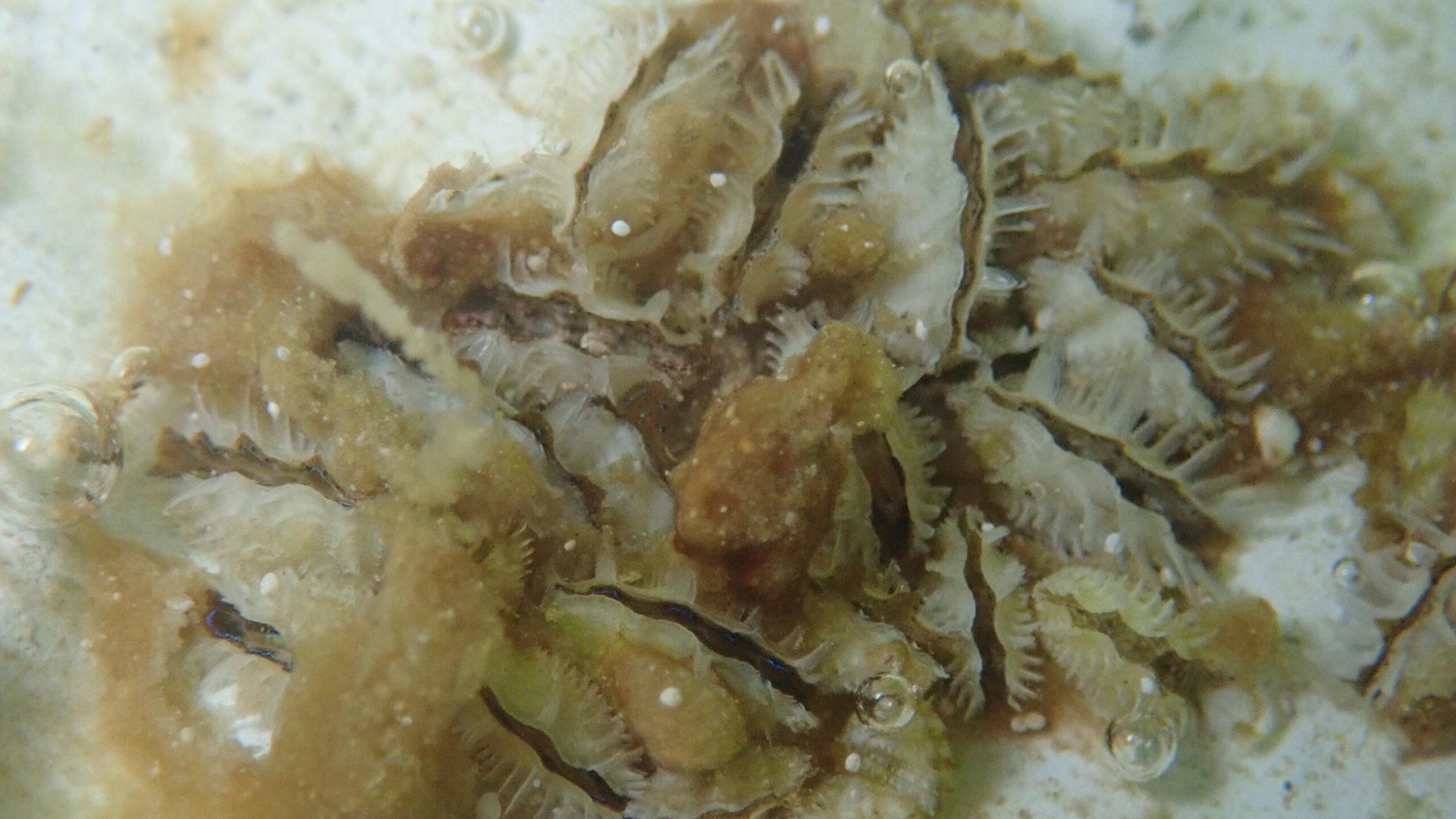Restoring pa’ua populations in Aitutaki
Saturday 16 April 2022 | Written by Supplied | Published in Features, Weekend

Juvenile four-month-old pa’ua bred through MMR’s pa’ua restoration programme. (Photo: Ministry of Marine Resources)/22041418
A significant number of pa’ua, or giant clams, bred through a Ministry of Marine Resources (MMR) programme have recently been outplanted in Aitutaki in an effort to revive local populations of these vital marine animals.
Long favoured by locals as a source of food, populations across many of our islands were decimated in the 1980’s and 1990’s due to overharvesting, and they have yet to recover to historic levels.
MMR along with overseas development partners are hoping to reverse that trend by strengthening their pa’ua breeding programme, which saw approximately 68,000 juvenile clams released along an area of Aitutaki’s lagoon ridge last month.
MMR senior fisheries officer and Aitutaki Marine Research Centre (AMRC) manager Richard Story says pa’ua play an important role in lagoon environments as filter feeders by removing algae, plankton, and suspended particles that in turn, improve water quality and thus play an important role in the health of the lagoon and coral.
“There was a huge problem of overharvesting of pa’ua in the Cook Islands,” says Story. “This problem is evident not only in the Cook Islands but throughout the Pacific and other oceans of the world.”
MMR’s efforts to revive pa’ua populations began in 1991 with the establishment of the AMRC and a hatchery which was built with funding assistance from the Australian government.
Initial results were varied, leading MMR to continue working with development partners to modify and enhance the programme.
One particular challenge cited by Story is pa’ua typically start reproducing 5-8 years into their lifecycle, which means a significant population is required to ensure this resource can become sustainable once again.
And using new breeding methods, MMR has been able to release an unprecedented number of juvenile pa’ua into the wild, thus potentially increasing the number of outplanted pa’ua that reach adulthood.
Outplanting pa’ua are part of a series of management measures in the Cook Islands that aim to support recovery of wild populations.
These measures include; restricting exports internationally and from some islands through by-laws, implementing ra’ui, and organising outreach activities so members of the public are aware of pa’ua lifecycles and how long they take to reproduce.
This latest work has benefited from a European Union-funded project called Global Climate Change Alliance Plus - Scaling up Pacific Adaptation (GCCA+ SUPA) which began in 2019 and is being implemented by MMR in partnership with the Pacific Community (SPC).
This project aims to improve AMRC’s infrastructure and to increase technical capacity for climate focused monitoring, research, and adaptive management of marine systems.
Other goals of the programme include expanding marine monitoring programmes, increasing awareness and education, and enhancing AMRC’s community outreach efforts.
Local programme work is being carried out by AMRC manager Richard Story and fisheries officers Joe Katangi and Terangi Isabella Christian, along with national coordinator Fiona Pearson and technical advisor Kirby Morejohn in Rarotonga.












































